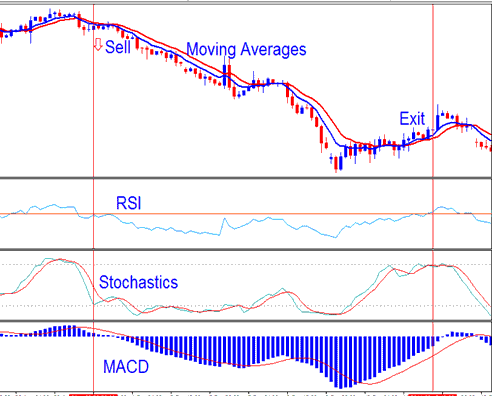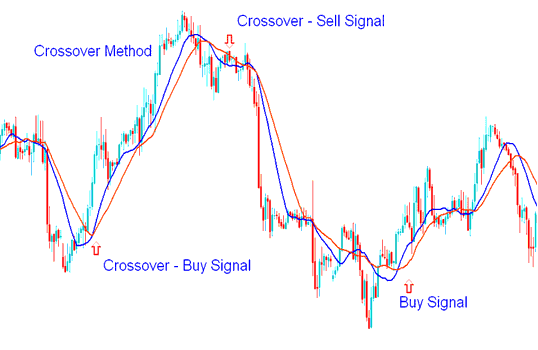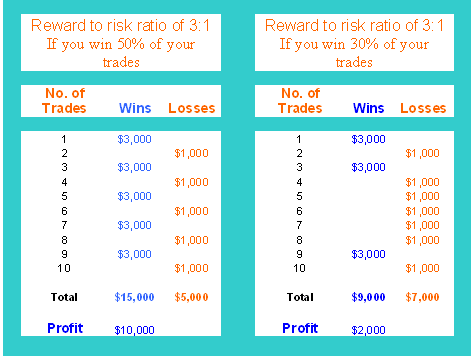Creating a Trade Strategy: Trading Indicator Based Strategy
A Index Strategy refers to a set of rules that you follow to manage your indices trades. These rules will determine when you open a stock indices trade & when you will exit the open trade. A trade Strategy is created by combining 2 or more indicators.
For illustration, Stochastic Oscillator Technical can be combined with other trading indicators to form a Strategy. For this example illustration stochastics can be combined with the indicators below to come up with the following Stock Indices Trade Strategy.
- RSI
- MACD
- Moving Averages
Example of trading Strategies - Trade Strategy Example

Creating a Strategy - Index Trade Strategy Example
So the question is how can one come up with a trading Strategies that work like the one above & how does one writedown it's rules? follow the steps explained below.
Seven steps to creating/developing a indicator-based Strategy
To come up with these set of rules we will make use of the following 7 guidelines.
1. Choose your Time-frame
This first step depends on number of hours you want to set a side to trading. Whether you prefer sitting in front of the computer constantly for several hours analyzing short charts time frames OR you prefer setting up your trade charts using bigger time-frames once or twice a day. Selecting a trade chart time-frame will mainly depend on what type of trader you are.
While testing your new Index Strategy you may want to find out about its performance on different chart time-frames & then choose the most accurate & profitable trade chart time-frame for you.
2. Choose trading indicators to spot a new market trend
The goal of a trader is to get into the trade as early as possible & take max advantage of price moves.
One of the common ways to spot a new trend as fast as possible is to use MAs Indicator. A simple Index strategy is to use a moving average Indices crossover Strategy that will identify a new opportunity at its earliest stage.
Moving Average Cross-over Method - Trade Strategy Example

Sell signal & Buy signal Derived/Generated by Moving Average Cross-over Method - Trade Strategy
3. Choose additional indicators to confirm the market trend
Once we get a new trend on the charts we need to use additional charts indicators which will confirm the entry signals & give either a green light for action or save a trader from fake-outs.
To confirm the trade signals we use RSI & Stochastic Oscillator.

RSI and Stochastic Oscillator Strategies - Trade Strategy Example
4. Finding entry and exit points
Once the indicators are chosen and selected so that one indicator gives and generates the signal and another confirms the trade signal, it's time to enter a trade position.
One should enter as soon as a trade signal is generated/derived & confirmed after a candle closes.
Aggressive traders enter a trade transaction immediately without waiting for current bar to close.
Most traders wait until the current price bar is closed and then enter the transaction if the trade transaction setup has not changed and the signal remains valid. This method is more considerate & prevents additional false entries and whipsaws.
Generating Trade Signals - Trading Indices Strategy
Generating Trade Signals - Trade Strategy Example
For exits, one can either set an amount of pips he wants to earn per trade or use technical tools which help to set profit goals like Fib extension or set a protective stop loss order depending on the market volatility at any particular time. Alternatively one can exit the trade transaction when the trading indicators give an in the in the opposite trend market trend trend market trend trend market trend trend signal.
When opening a new Index trade it is always important to calculate in advance how much you're willing to lose if the transaction moves against you.
5. Calculate risks in each setup
In trading you as a stock indices trader must calculate your trading risk for each position. Serious index traders will only enter an order if the risk : reward ratio is 2:1 or more.
If you use a high risk : reward ratio like 2:1, you increase your chances of being profitable in the long-run.
The Reward to Risk Chart below indicates to you how:

Capital Management Risk : Reward Chart - Trade Strategy
In the first illustration of Risk to Reward Ratio, you as a stock indices trader can see that even if your Stock Index Strategy only won 50 % of your trades, you'd still earn a profit of $10,000 as shown on the exemplification put on display above. Read more on this topic: Money Management Principles and Money Management Methods.
Before and Prior to opening a new trade position, a indices trader should define the point which he will close out the trade if it turns out to be a losing one. Some people use Fib levels & support & resistance levels. Others just use a pre-determined stop loss to set stop loss order once they have opened a trade.
6. Write down the Strategies rules & follow them
A Trade Strategy refers to a set of trading rules which you follow to manage your trades.
The keyword is A SET OF TRADE RULES which you as a Stock Index trader must follow. If you do not follow the trade rules then you don't even have a Trade Strategy in the first place.
The next Index Strategies lesson shows you an example of how to use the above steps to develop your own Indices online Strategy:
Next Lesson: Example illustration of Writing Trade Strategies Rules
7. Practice Indices on a Practice Demo Account
Without enough trades, you'll not be able to realize the true profitability of your Stock Indices Strategy.
Once you have your Stock Indices Trade Strategy rules written, it is time to test and improve your trade Strategy by using it on a practice trading account.
Open a free demo account and trade your Stock Indices Strategy to see how well it will respond.
It is strongly recommended to start with a demo account and practice trading for at least for 1 or 2 months so that to gain and garner some practice & experience how the market works.
Once you start making some a profit on your demo trading account you as a stock indices trader can then try opening a live account and begin online trading index.
Learn More Topics & Tutorials:
- Index Trading Day Index Candle Patterns Tutorial Guide
- How to Trade EU 50 Index Trade Strategy
- What's 1:30 Index Leverage in Indices Trade?
- Placing Channels in Index Charts on MetaTrader 4 Platform
- How to Add EU 50 on MetaTrader 5 EU 50 iPad App
- How to Interpret and Analyze a Indices Pullback on a Downward Stock Index Trend
- How to Trade SWI20 Tutorial Guide for SWI 20 Index
- RSI Swing Failure Index Trading Setup Strategies
- How Can I Start Index Trade?
- Gann HiLo Activator Index Indicator Analysis


